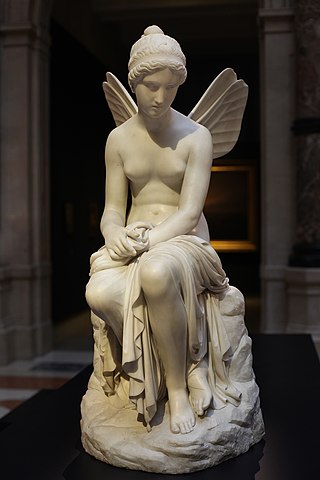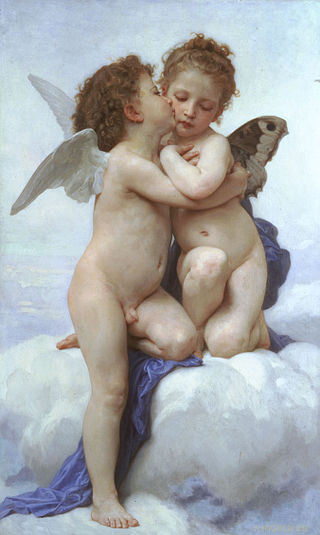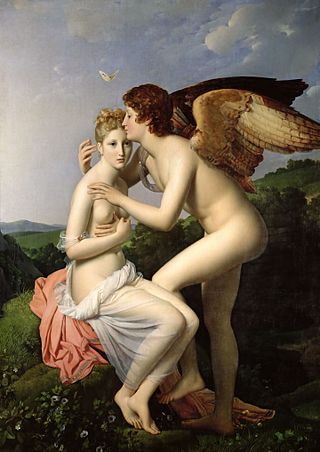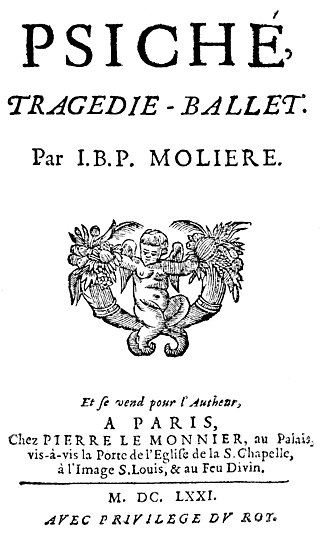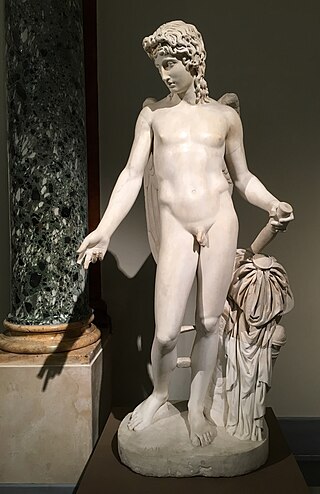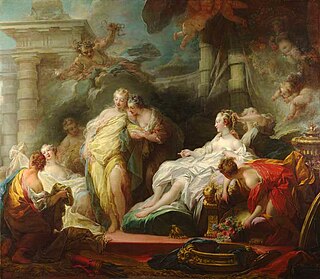Part One
The story tells the ancient Greek myth of Cupid and Psyche, from the perspective of Orual, Psyche's older sister.
It begins as the complaint of Orual as an old woman, who is bitter at the injustice of the gods. She has always been ugly, but after her mother dies and her father the King of Glome remarries, she gains a beautiful half-sister Istra, whom she loves as her own daughter, and who is known throughout the novel by the Greek version of her name, Psyche. Psyche is so beautiful that the people of Glome begin to offer sacrifices to her as to a goddess. The Priest of the goddess Ungit, a powerful figure in the kingdom, then informs the king that various plagues befalling the kingdom are a result of Ungit's jealousy, so Psyche is sent as a human sacrifice to the unseen "God of the Mountain" at the command of Ungit, the mountain-god's mother. Orual plans to rescue Psyche but falls ill and is unable to prevent anything.
When she is well again, Orual arranges to go to where Psyche was stranded on the mountain, either to rescue her or to bury what remains of her. She is stunned to find Psyche is alive, free from the shackles in which she had been bound, and furthermore says she does not need to be rescued in any way. Rather, Psyche relates that she lives in a beautiful castle that Orual cannot see, as the God of the Mountain has made her a bride rather than a victim. At one point in the narrative, Orual believes she has a brief vision of this castle, but then it vanishes like a mist. Hearing that Psyche has been commanded by her new god-husband not to look on his face (all their meetings are in the nighttime), Orual is immediately suspicious. She argues that the god must be a monster, or that Psyche has actually started to hallucinate after her abandonment and near-death on the mountain, that there is no such castle at all, and that her husband is actually an outlaw who was hiding on the mountain and takes advantage of her delusions in order to have his way with her. Orual says that because either possibility is one that she cannot abide by, she must disabuse her sister of this illusion.
She returns a second time, bringing Psyche a lamp for her to use while her "husband" sleeps, and when Psyche insists that she will not betray her husband by disobeying his command, Orual threatens both Psyche and herself, stabbing herself in the arm to show she is capable of following through on her threat. Ultimately, reluctantly, Psyche agrees because of the coercion and her love for her sister.
When Psyche disobeys her husband, she is immediately banished from her beautiful castle and forced to wander as an exile. The God of the Mountain appears to Orual, stating that Psyche must now endure hardship at the hand of a force he himself could not fight (likely his mother the goddess Ungit), and that "You too shall be Psyche," which Orual attempts to interpret for the rest of her life, usually taking it to mean that as Psyche suffers, she must suffer also. She decries the injustice of the gods, saying that if they had shown her a picture of Psyche's happiness that was easier to believe, she would not have ruined it. From this day forward she vows that she will keep her face veiled at all times.
Eventually, Orual becomes a Queen, and a warrior, diplomat, architect, reformer, politician, legislator, and judge, though all the while remaining alone. She drives herself, through work, to forget her grief and the love she has lost. Psyche is gone, her other family she never cared for, and her beloved tutor, "the Fox," has died. Her main love interest throughout the novel, Bardia, the captain of the royal guard, is married and forever faithful to his wife until his death. To her, the gods remain, as ever, silent, unseen, and merciless.
While Bardia is on his deathbed, Orual decides she can no longer stand the sight of her own kingdom and decides to leave it for the first time to visit neighboring kingdoms. While resting on her journey, she leaves her group at their camp and follows sounds from within a wood, which turn out to be coming from a temple to the goddess Istra (Psyche). There Orual hears a version of Psyche's myth, which shows her as deliberately ruining her sister's life out of envy. In response, she writes out her own story, as set forth in the book, to set the record straight. Her hope is that it will be brought to Greece, where she has heard that men are willing to question even the gods.
Part Two
Orual begins the second part of the book stating that her previous accusation that the gods are unjust is wrong. She does not have time to rewrite the whole book because she is very old and of ill health and will likely die before it can be redone, so instead she is adding on to the end.
She relates that since finishing part one of the book, she has experienced a number of dreams and visions, which at first she doubts the truth of except that they also start happening during daytime when she is fully awake. She sees herself being required to perform a number of impossible tasks, like sorting a giant mound of different seeds into separate piles, with no allowance for error, or collecting the golden wool from a flock of murderous rams, or fetching a bowl of water from a spring on a mountain which cannot be climbed and furthermore is covered with poisonous beasts. It is in the midst of this last vision that she is led to a huge chamber in the land of the dead and given the opportunity to read out her complaint in the gods' hearing. She discovers, however, that instead of reading the book she has written, she reads off a paper that appears in her hand and contains her true feelings, which are indeed much less noble than Part One of the book would suggest. Orual thinks she has been speaking only a short time, but then when stopped, realizes she has been pouring out the story of all her inner conflict and turmoil for days, repeating herself over and over and over again, as the gods sat silently. Still, rather than being jealous of Psyche, as the story she heard in the temple suggested, she reveals that she was jealous of the gods because they were allowed to enjoy Psyche's love while she herself was not.
The gods make no reply. But Orual is content, as she sees that the gods' "answer" was really to hold up the mirror of her lies to herself, and make her understand the truth of her own life and actions. Then she is led by the ghost of the Fox into a sunlit arena in which she learns the story of what Psyche has been doing: she has herself been assigned the impossible tasks from Orual's dreams, but was able to complete them with supernatural help. Orual then leaves the arena to enter another verdant field with a clear pool of water and a brilliant sky. There she meets Psyche, who has just returned from her last errand: retrieving a box of beauty from the underworld, which she then gives to Orual, though Orual is hardly conscious of this because at that moment she begins to sense that something else is happening. The God of the Mountain is coming to be with Psyche and judge Orual, but the only thing he says is "You also are Psyche" before the vision ends. The reader is led to understand that this phrase has actually been one of mercy the entire time.
Orual, awoken from the vision, dies shortly thereafter but has just enough time to record her visions and to write that she no longer hates the gods but sees that their very presence, though mysterious, is the answer she always needed.



